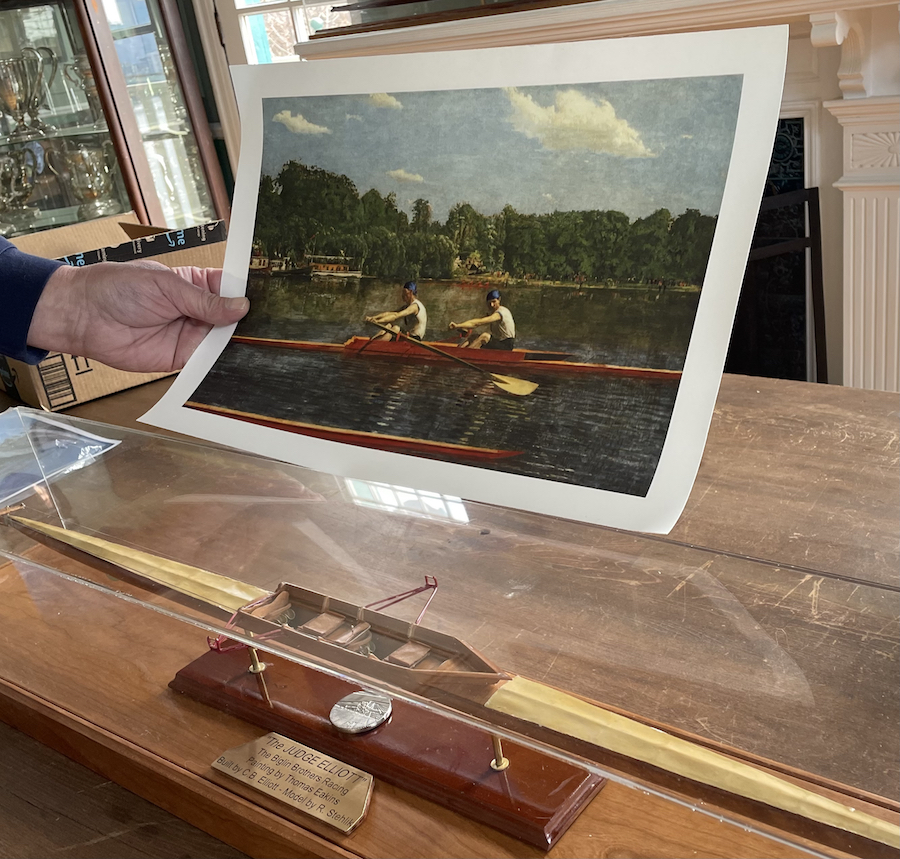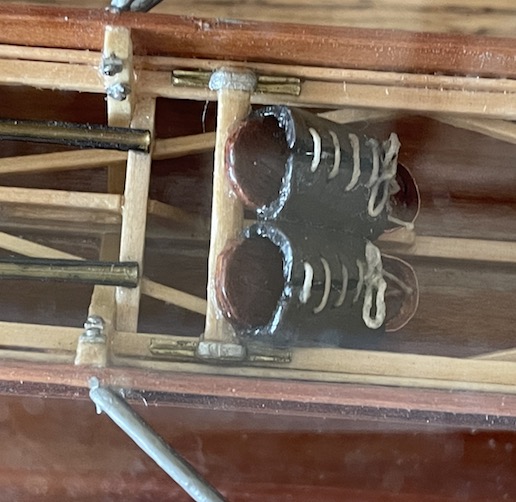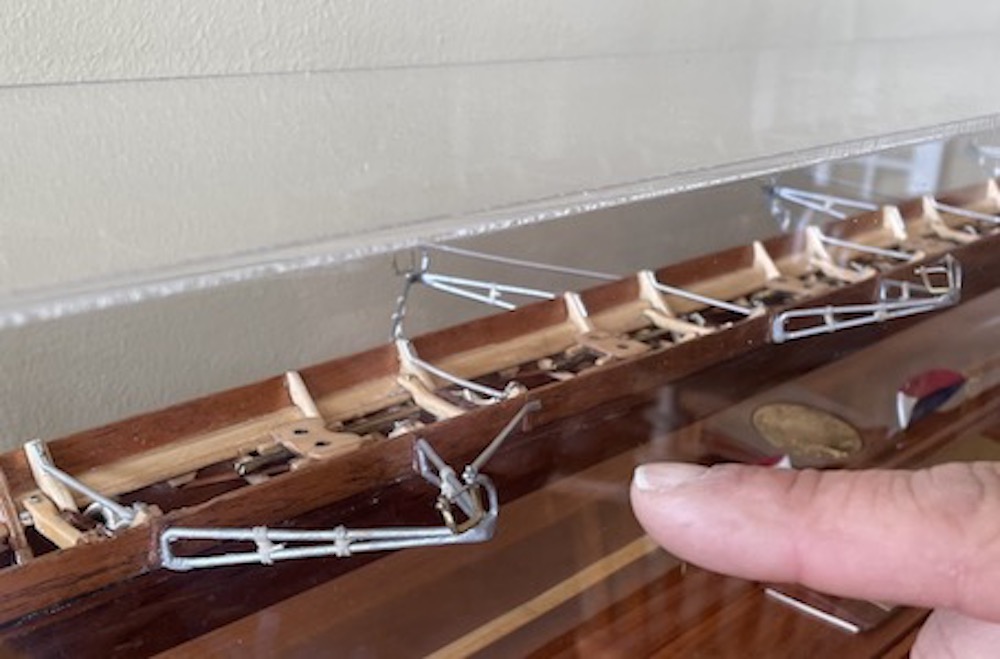
As a kid, Rick Stehlik loved putting together those plastic models of trucks, planes and boats. Then he grew up and put that passion aside.
Instead, he found another passion—rowing. He loved it so much at Harriton High School that after landing at Carnegie Tech, which at the time did not have a crew program, he eventually found a guy who had won permission to row on a reservoir some 30 miles away and had even parked a house trailer there. “I would drive up from Pittsburgh and every night,” Rick reminisced, “we would race each other in pitch darkness, under the stars. It was fantastic. In the morning, we’d get up at the crack of dawn and row again. Then I’d get in my car and go back to school.”
Rick came back to Philadelphia, joined the Malta Boat Club and became a champion sculler, winning national and world competitions and numerous regattas on the Schuylkill.
But about five years ago, Rick – trained in design and with a career in construction management – circled back to the idea of modeling, melding his two passions. This time, though, he would build intricate models from scratch, with no directions to follow.
So far he has constructed six miniature replicas, diving deeply into archival resources and other historic finds in order to visualize wooden boats that no longer exist. Among his projects:
–The Josie, a scull rowed by Thomas Eakins’ Central High School buddy Max Schmitt, which Eakins painted in 1871 and now hangs in the Metropolitan Museum in New York;

–The pair rowed by the Biglin brothers, famed professional rowers of the 19th century, depicted by Eakins in the Biglin Brothers Racing at the National Gallery;
– The Doc Riggall, the eight-oared shell which members of the Vesper Boat Club rowed to a gold medal in the 1964 Tokyo Olympics.
Rick’s first attempt was the shell in which he won the championship single at the Canadian Henley in 1971. He also modeled the double that he and Fred Duling raced to a bronze medal in the rowing world championships of 1977. Both were made by Stämpfli, a Swiss firm that started building racing boats in 1898. Rick also modeled the Stämpfli (four person) quad which Malta used to win a national title.
Using a scale of 1 inch to 1 foot, Rick carves the hulls of all his boats out of 1 1/12-inch cherry wood dowels, which he splits the long way. Then, he said, “I carve it down to the hull shape and then I sit back and look at it. I go by feel, like sculpture.” Next, he gently scoops out to the correct thickness the “cockpit,” where the rowers sit, hoping not to break through the bottom. “So far, I’ve only done that once,” he said.
Then come the riggers, the seats, the foot stretchers, even in some cases a steering mechanism of strings attached to a rudder. The seats are cherry. The riggers and oarlocks are made of brass tubing. The foot stretchers, into which rowers anchor their feet, are tooled from leather. For the “decking” –the thin material that covers the bow and stern – he uses various materials including acetate and varnished fabric.. After an on-and-off labor of about six months he finally finishes his model with multiple coats of lacquer.
“It’s very fine work. Every rib has to be hand carved,” said Rick, who calls himself “a real stickler for detail.” At 76, he says, “thank goodness I still have dexterity and eyesight for small work.”

Besides being meticulous in his craftsmanship, Rick conducts exhaustive historic research.
He has filled 10 binders, each about 3 inches thick with copies of documents, photographs and records of boat companies that no longer exist, subjects in which he has a particular interest, and his own tales of discovery. He’s filled another 10 tomes with records related to the Malta Boat Club in Philadelphia, where Rick – a longtime member, coach and past president – is also its self-appointed historian.
Particularly difficult was the research he did to recreate Max Schmitt’s boat, the “Josie,” painted in 1871 by Eakins
“There was controversy about the Josie,” Rick explained, with some articles of the day saying it was made of wood and built by Charles B. Elliot in New York. But others said it was a lighter boat, made of paper coated with shellac to withstand the water. (Only one such paper boat in the world has survived, he said, in a Troy, NY museum.)
Rick decided to do the Josie in wood, though he plans to create a paper version in the future. (He has a print out of a 500-page book from 1871 that details how exactly to make a paper boat). He used silk for the decking, which is what was done back then.
In very tiny letters, he signed the name “Josie” on the boat, just as Eakins had depicted it.
He gave that model to the Pennsylvania Barge Club, where Max Schmitt was a member and where it is now on display.
Another challenge was the Vesper Eight’s Doc Riggall. It had vanished despite its fame and relatively recent history. The boat builder, Donoratico in Italy, had closed and no plans had survived. The breakthrough for Rick came when he discovered three other boats built by Donoratico – one at Northeastern College, one in Australia and one at the Henley Museum in England. Then someone told him that the original bow of the three-section Doc Riggall might be in a warehouse in Mystic, Connecticut.

Rick tells how the Doc Riggall briefly surfaced in Florida before sinking from sight, how he serendipitously discovered the bow in Mystic, and how that bow was returned to the Vesper Boat Club where it now hangs. His story is here:
Rick’s fascination with building and documenting wooden boats is underscored by the fact that they have disappeared, long supplanted by boats made of Kevlar and other more durable lightweight materials. Moreover, few of those skilled in repairing wooden boats are still around.
It is that same sense of urgency that is also propelling Rick to spearhead an initiative on Boathouse Row to help the clubs preserve the many historical artifacts that they have shoved into closets or that hang open to the elements on their walls.
More on that project in a future blog.